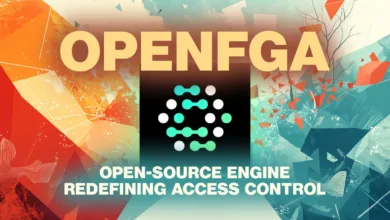Rust Outperforms Python and Java in Data Engineering

▼ Summary
– Rust is gaining traction in enterprise data pipelines due to its performance, safety, and modern design, offering significant improvements over Python and Java.
– Singular’s Extract platform, powered by Rust, achieves 17x performance gains and up to 70% cost reductions compared to traditional ELT tools.
– Rust eliminates common data engineering issues like garbage collection pauses and memory overhead, providing C-level performance with memory safety.
– Rust’s memory efficiency allows Singular to support 20x more customers per server, reducing costs by over 50% and improving operational efficiency.
– Despite initial challenges like building infrastructure from scratch, Rust’s strict compiler and growing ecosystem make it viable for real-time and data-intensive applications.
Rust is rapidly emerging as a powerful alternative to Python and Java in data engineering, delivering unmatched performance and efficiency for modern data pipelines. While traditional languages dominate the field, organizations are increasingly turning to Rust for its unique blend of speed, safety, and scalability, qualities that translate into tangible cost savings and performance gains.
Singular’s Extract platform exemplifies this shift, achieving 17x faster processing speeds and cutting operational costs by up to 70% compared to conventional ELT tools. These improvements stem from Rust’s ability to eliminate inefficiencies inherent in garbage-collected languages like Python and Java. Unlike those options, Rust provides C-level performance without sacrificing memory safety, making it ideal for high-stakes data workloads.
Memory efficiency stands out as one of Rust’s most compelling advantages. Singular reported a 20x reduction in memory usage when switching from Python to Rust, allowing them to serve significantly more customers on the same hardware. For enterprises processing massive datasets, this translates into lower infrastructure costs and improved scalability. Early adopters, including major players like Warner Bros. and Electronic Arts, are already seeing 50% or greater cost reductions, with some operations running 100x more efficiently than before.
Security is another critical benefit. Rust’s ownership model prevents common vulnerabilities like buffer overflows and dangling pointers, which plague languages such as C and C++. For data pipelines handling sensitive information, this means fewer risks of crashes, breaches, or silent data corruption. As Gadi Eliashiv, CEO of Singular, explains, “Writing Rust feels like coding at the kernel level, except with modern safeguards that eliminate entire classes of bugs.”
Adopting Rust isn’t without challenges, however. The ecosystem lacks the breadth of pre-built connectors available in Python, forcing teams to develop foundational infrastructure from scratch. Yet, once established, Rust’s strict compiler catches errors early, reducing debugging time and improving code reliability. Eliashiv’s team found that onboarding new developers became easier because the compiler enforces correctness, minimizing the risk of breaking changes.
Talent availability remains a hurdle, but strategic approaches, like training top engineers first—can ease the transition. Tools like Cursor have also helped teams accelerate Rust adoption by assisting with code comprehension and cross-functional collaboration. As the language matures, improvements in async programming and library support are making Rust increasingly viable for real-time applications beyond traditional data pipelines.
The broader implications are clear: as cloud costs rise and data demands grow, Rust’s efficiency offers a competitive edge. SciPlay’s product director, Gal Karniel, highlights the practical impact: “We got the performance we needed without expanding our engineering team.” With its expanding reach into real-time systems and high-performance computing, Rust is poised to redefine what’s possible in data engineering, and beyond.
(Source: The New Stack)





